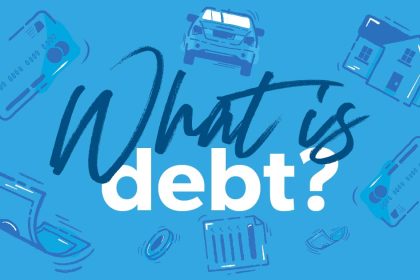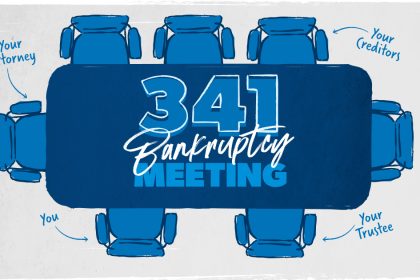Credit Sesame discusses credit in 2024–trends, tools, products, and outlook.
Credit remained a cornerstone of financial activity in the United States throughout 2024, but significant shifts occurred due to economic trends, technological advancements, and evolving consumer behaviors.
1. The economy and trends in credit in 2024
The U.S. economy in 2024 experienced a mix of recovery and recalibration. Inflation looks to have stabilized after a turbulent period, but interest rates stayed higher than pre-pandemic levels. These conditions affected and continue to influence how Americans use credit.
- Higher interest rates. Borrowing costs for credit cards, mortgages, and personal loans remain elevated, prompting consumers to think twice before taking on new debt.
- Demand for credit card alternatives. The higher cost of borrowing encouraged many to explore options like personal installment loans and Buy Now, Pay Later (BNPL) services.
- Credit score awareness. As lenders tightened their criteria, consumers became more aware and focused on maintaining good credit scores to secure favorable terms.
2. The rise of digital credit tools
Technology continues to transform how Americans manage credit in 2024. From tracking spending to improving credit scores, digital tools have become more accessible and personalized.
- Credit monitoring apps. Platforms like Credit Sesame have evolved beyond score checking, offering tailored recommendations and proactive alerts.
- AI-powered financial planning. Artificial intelligence is now a key feature in credit management tools, helping users make informed decisions about credit utilization, debt repayment, and more.
- Mobile payments integration. As digital wallets like Apple Pay and Google Wallet gain popularity, credit cards are increasingly integrated for seamless spending and rewards tracking.
3. Evolving credit products
The diversity of credit products in 2024 has reshaped the landscape to meet varied consumer needs and financial situations.
- Subscription credit cards. Flat-fee subscription-based credit cards appeal to consumers seeking predictable costs instead of traditional interest rates.
- Sustainability-focused credit. Green credit cards offer rewards for eco-friendly purchases and have gained traction among environmentally conscious consumers.
- Flexible payment plans. BNPL services evolved, offering longer interest-free periods and becoming more integrated into mainstream credit options.
4. Credit and housing in 2024
The housing market remains a focal point for credit use, with unique trends influencing how Americans buy and finance homes.
- Adjustable-rate mortgages. High fixed rates make ARMs more appealing, offering lower initial costs.
- Credit score thresholds. Mortgage lenders raised minimum credit score requirements, increasing the importance of strong credit for homebuyers.
- Shared equity programs. New financing models like shared equity agreements allow buyers to access homes without relying on traditional loans.
5. The push for financial inclusion
Efforts to expand access to credit for underserved communities accelerated in 2024, driven by fintech innovation and policy changes.
- Alternative credit scoring. To evaluate creditworthiness, lenders began using non-traditional data, such as rent and utility payments.
- Fintech solutions. Financial technology companies develop ever-more tailored credit products for people with thin or no credit reports who want to establish their credit history.
- Policy initiatives. Federal and state programs incentivize banks to lend in low-income areas, aiming to reduce financial inequities.
6. Security and fraud prevention
The rise of digital credit usage made security a top priority in 2024. Innovations addressed consumer concerns and emerging threats.
- Biometric authentication. For added security, many credit providers have adopted biometric verification, such as fingerprints and facial recognition.
- Real-time fraud alerts. AI-driven systems monitor spending patterns to flag suspicious activity instantly.
- Cybersecurity awareness. Educational campaigns from financial institutions help consumers recognize and avoid credit scams.
7. Credit education and empowerment
Credit education received more attention in 2024, driven by the understanding that informed consumers benefit themselves and the economy.
- Financial literacy programs. Schools and workplaces incorporate credit management into broader financial education initiatives.
- DIY credit management. Online resources empower individuals to address credit issues independently.
- Community support. Peer-to-peer platforms allow users to share advice and strategies for credit improvement.
8. Consumer behavior shifts
American attitudes toward credit reflect broader cultural and generational changes in 2024.
- Millennials and Gen Z. Younger generations remain cautious about traditional credit, favoring debit cards and BNPL solutions to avoid debt.
- Debt consolidation. Many consumers use personal loans or balance transfer cards to simplify payments and reduce interest costs.
- Experience over material goods. Credit use shifted toward funding experiences like travel, reflecting changing priorities.
Economic forces, technological progress, and consumer needs have shaped credit in 2024. Despite challenges like high interest rates and security threats, credit product and tool innovations provided new opportunities for financial empowerment. Credit remained a vital part of the financial landscape in the United States, adapting to meet the demands of a changing world.
If you enjoyed What’s special about credit in 2024? you may like,
Disclaimer: The article and information provided here are for informational purposes only and are not intended as a substitute for professional advice.
Read the full article here

















